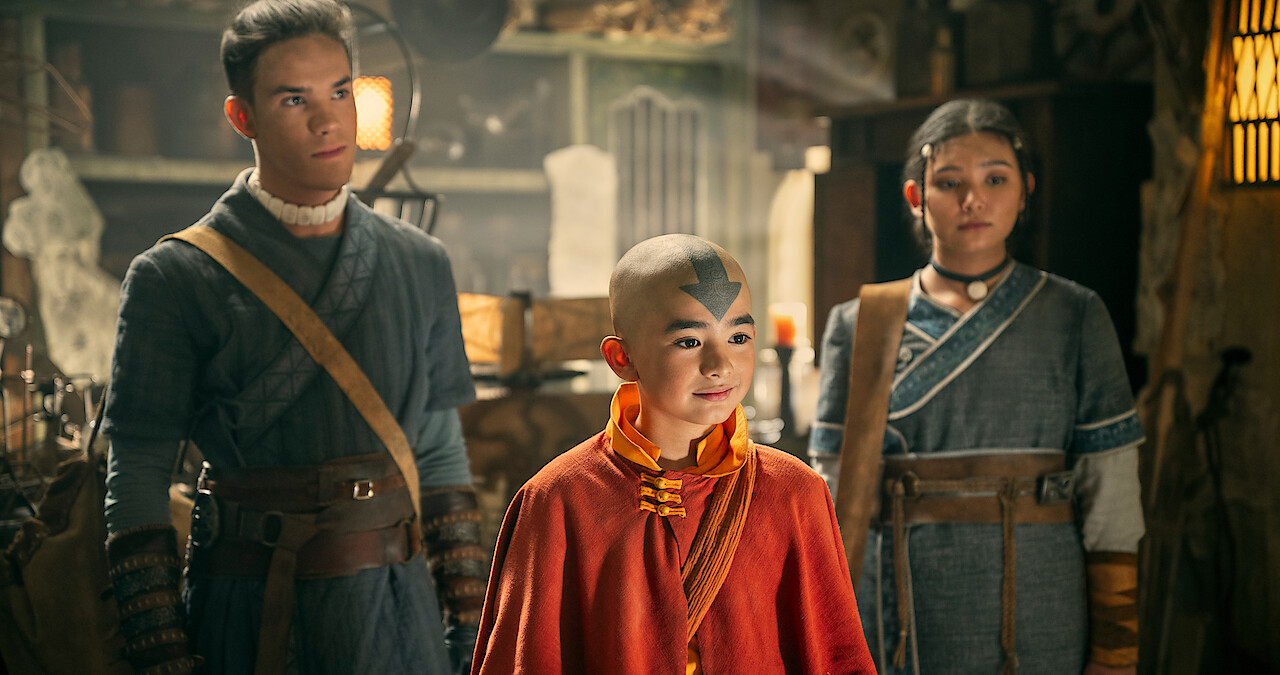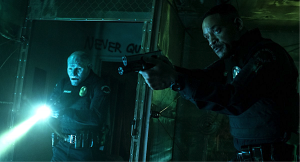A brilliant animated series. A controversial cartoon sequel. An abhorrent film adaptation. Long ago, fans of Avatar: The Last Airbender (2005) made peace with what little they had. Then, everything changed when Netflix announced its new live-action remake. Only the show’s original creators—Bryan Konietzko and Michael Dante DiMartino—could do the series justice, but when the world needed them most, they vanished.
Released in 2005, Avatar: The Last Airbender follows Aang, a 12-year-old airbender as he embarks on a journey with water tribe siblings Sokka and Katara across the fantastical water, earth, and fire nations to master all four elements and defeat the aggressive fire nation to restore balance in the world. With exceptional world-building, a storyline with complexity unprecedented for children’s TV, and an endless capacity to move and delight, it should come as no surprise that studios lept at the opportunity to retell Aang’s story on the big screen. The high-stakes action and rich expansiveness of its world, inspired by diverse real-life Asian and Native American cultures, imbues the show with an epicness that feels destined to receive the high-budget live-action treatment.
Yet despite production costing a whopping 150 million dollars and another 130 million for marketing, The Last Airbender (2010) landed with resounding failure. Horribly filmed, written, and whitewashed, the movie was nothing short of a laughing stock, barely earning 5% on Rotten Tomatoes. The film became a massive sore spot for fans and tinged any mention of an Avatar adaption with a note of fear, effectively halting any further attempts—until now. Netflix’s 2018 announcement of a new remake, with Konietzko and DiMartino on board, sparked a new wave of excitement among fans who felt reassured by the involvement of the original creators. Yet the duo shockingly announced their departure from the project in August 2020, citing a lack of creative control over the series and renewing fears of another live-action abomination.
Regardless of fans’ skepticism, Avatar: The Last Airbender (2024) still arrived on Netflix with ample excitement. Indeed, this adaptation is much better than the last, especially in terms of visuals. Avatar escapes the trap of equating live-action to a “realistic” muted color palette, presenting the four nations in their full vibrant glory. The mountain city of Omashu is particularly astounding: with walls that stretch to the sky, towering pagodas that glitter emerald green, and winding stone slides that chart the staggering slopes, the city is the paragon of earth-bending power, marking one of the last earth kingdom strongholds.
Beyond sweeping background visuals, equal care is paid to the details—the remake beats the Netflix bad CGI curse, with animations breathing life and magic into the series. The animals of the original cartoon are unique and expressive: they blend fantastical elements with real-life creatures, occupying important places in the story and world. Appa, Aang’s best friend and one of the original’s most beloved characters, was captured perfectly, the 10-foot flying bison’s hyper-realistic fur billows in the wind as it glided through the air. Appa’s personality was not also lost, his sass on full display with every nostril flare, tail flap, and disgruntled head shake. Another one of Aang’s loyal companions is Momo, a wide-eyed, big-eared winged lemur that is as adorable and playful as ever, leaping from place to place to nestle up to the main cast. On the other side of the spectrum is Koh the Face Stealer (George Takei), a face-changing giant centipede spirit that takes people’s souls. Portrayed with a looming monstrous presence and waxy complexion, the evil spirit is exactly depicted in the cartoon, and utterly terrifying.
Yet despite being visually stunning, the remake feels overwhelmingly hollow in substance. The creative differences vaguely cited by the original creators in their departure seem obviously manifest in the show’s haphazardly stitched story arcs and lack of character development. Understandably, a live-action adaptation is not a recreation—the creators explicitly stated that they want to bring a fresh take on the story—but while combining several episodes’ worth of plot points into one sometimes made for an exciting, fast-paced experience, it took away crucial time for the show to flesh out its central characters beyond lengthy expository monologues and flashbacks. As a result, character personalities feel utterly unrecognizable from the original: those we spend most of our time with—Aang (Gordon Cormier), Sokka (Ian Ousley), and Katara (Kiawentiio Tarbell)—feel soulless compared to their beloved cartoon counterparts. Netflix has wiped Aang of his fun-loving nature and changed his gradual acceptance of his responsibility to a series of drawn-out conversations about it that are ostensibly the same. Similarly, Sokka is given far less time to reckon with his insecurities step by step, or to truly let his comedic chops shine.
Most notably, Katara is downright boring in the new adaptation. In the cartoon, Katara is characterized by her noble kindness, incredible stubbornness, and unstoppable determination. Her concern for others and desire to help often translates into brash action, sometimes landing her friends in serious trouble. She is emotional and angry, not one to shy away from crying or picking a fight. Despite being a waterbender, Katara is full of fire, holding a belly of smoldering rage befitting a character who lost so much so young.
Netflix’s Katara is completely missing that fire. Although still fundamentally empathetic, her rage has been replaced by passive acceptance, and her outbursts transformed into diplomatic pleas. It is as though the writers didn’t trust the audience to deal with a complex female character, too afraid to create a Katara that is “unlikeable” or “annoying,” stripping her of the flaws that make her so interesting. One of the most memorable moments of the cartoon is when Katara challenges Master Pakku to a duel for refusing to train her on the basis of her gender. Katara here is brazen and unyielding. We can feel her justifiable anger, and when she gets up blow after blow to declare “You can’t knock me down,” we cheer for her.
In contrast, the Netflix fight felt incredibly low stakes; not like the formative character development moment it was meant to be, but simply a sequence that one feels compelled to get through. There is little buildup to the fight as Netflix Katara, in all her meekness, never builds much animosity with Pakku. This diplomacy extends into the duel, during which Katara does not say a single thing, making the action, despite its beautiful choreography, feel strangely procedural.
Netflix’s Avatar: The Last Airbender” is by no means a repeat of The Last Airbender (thank god). Boasting impressive visuals, the show brings to life a faithful recreation of the world of water, air, earth, and fire, but it stumbles in capturing the heart of the original. The series’ fast-paced approach was detrimental to character development, leaving beloved heroes as pale imitations of their former selves. Prioritizing style over substance, Netflix lost the magic of the source material in its quest for a fresh take. Luckily, there is still hope for redemption: Avatar has already been renewed for a second and third season. But until Book Two hits our screens, fans will be wondering if the cycle of disappointing live-action adaptations will continue, waiting for a true live-action embodiment of Aang’s journey.





